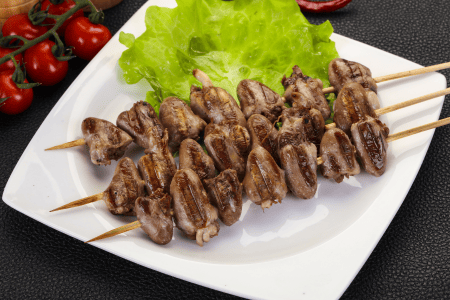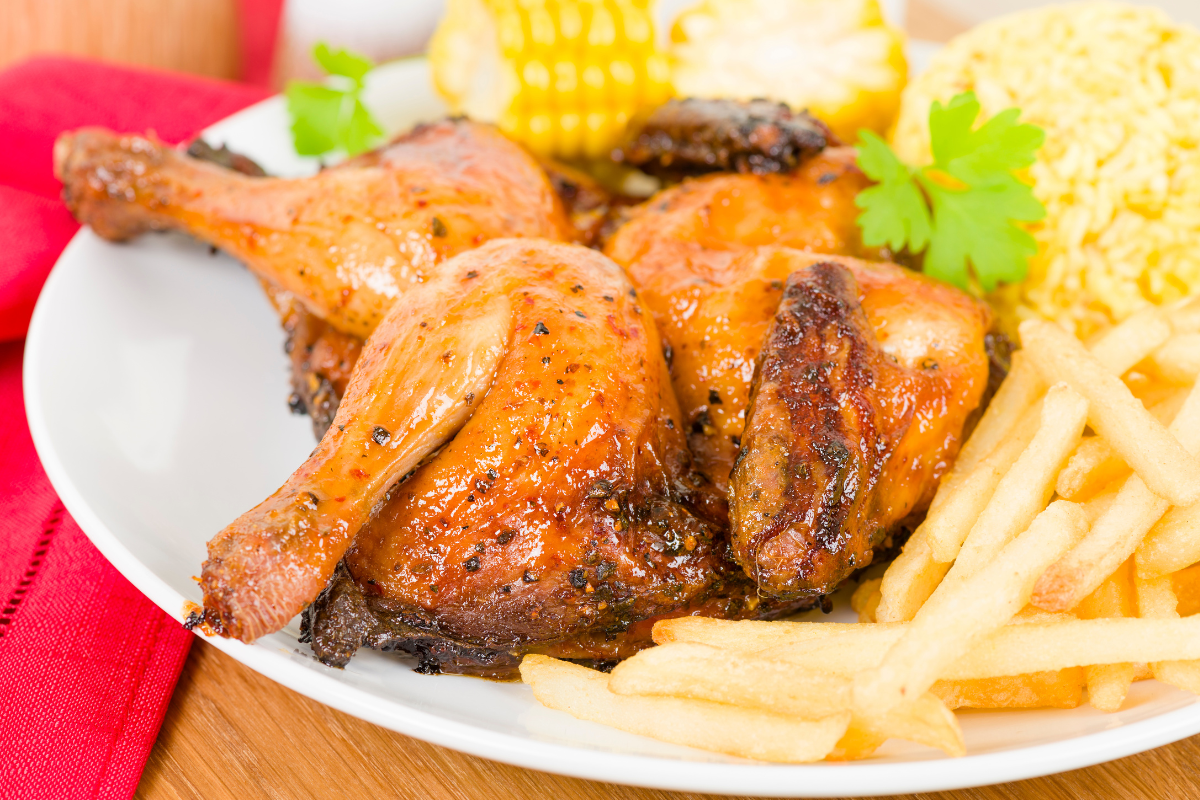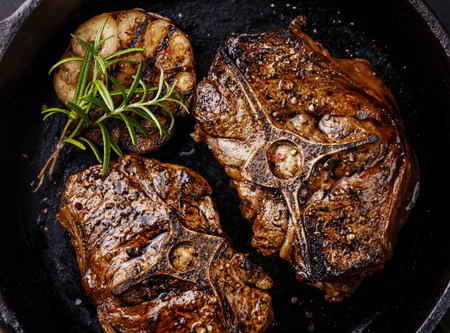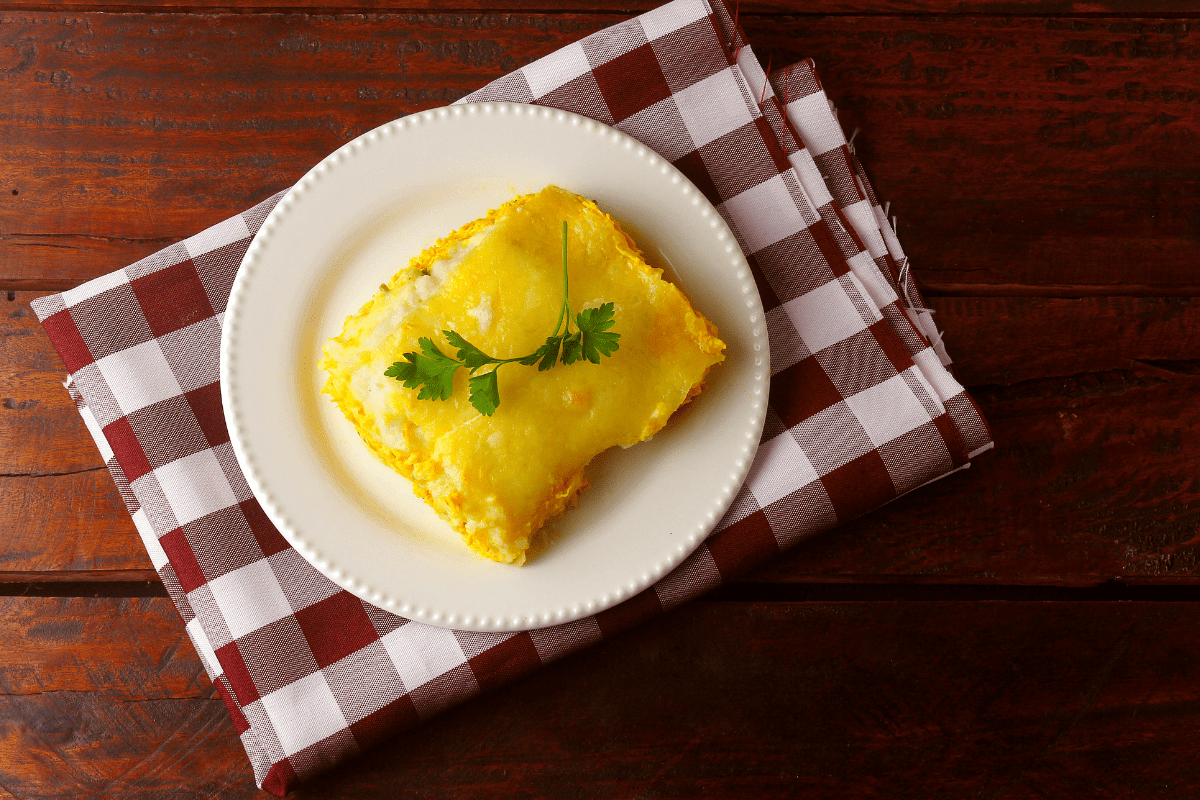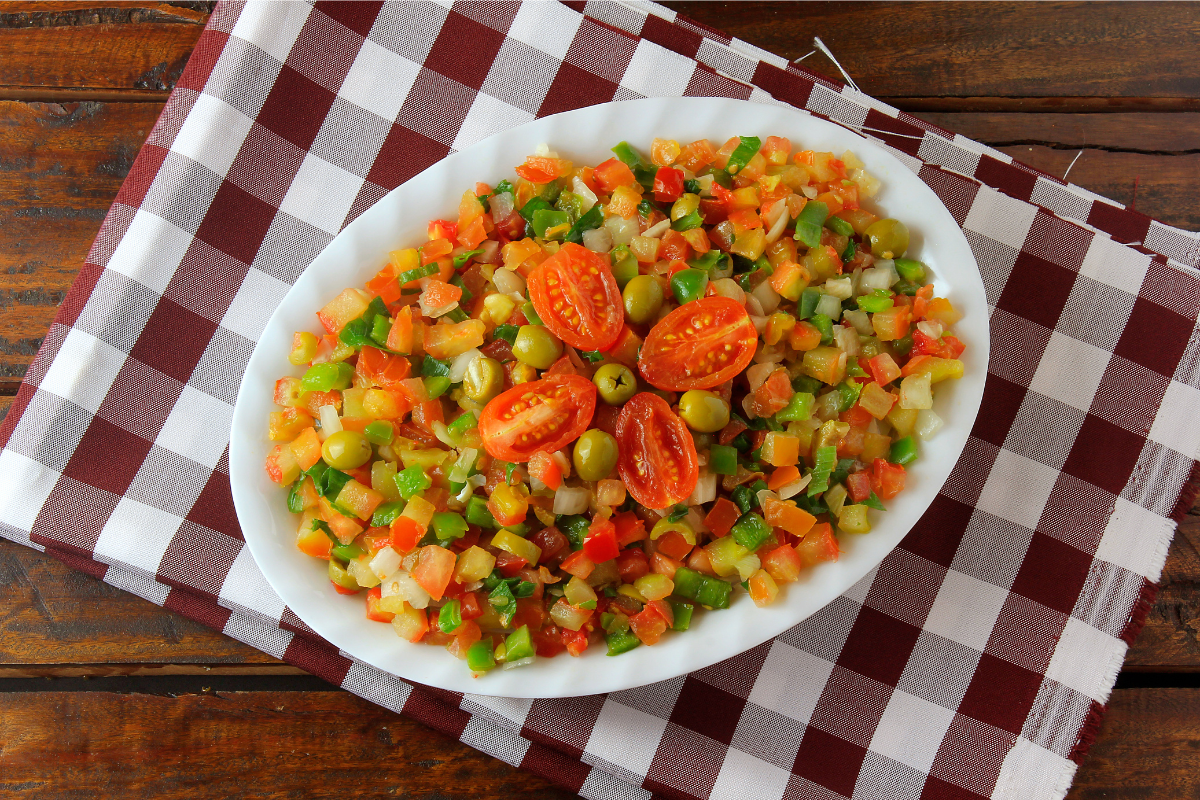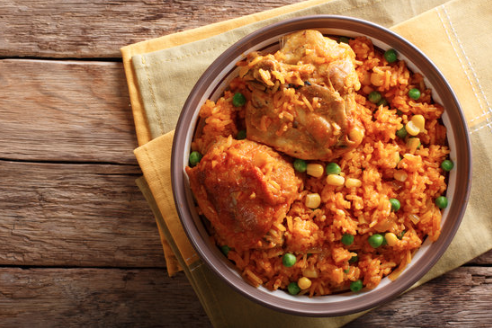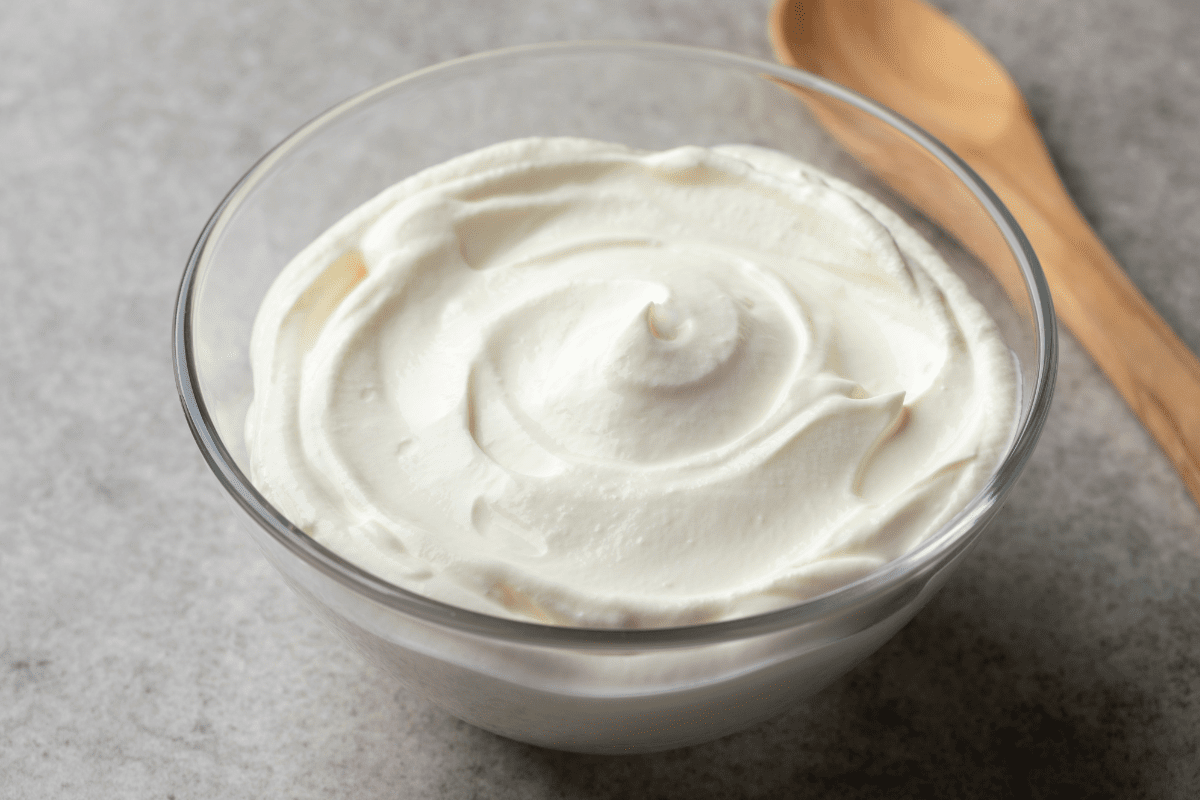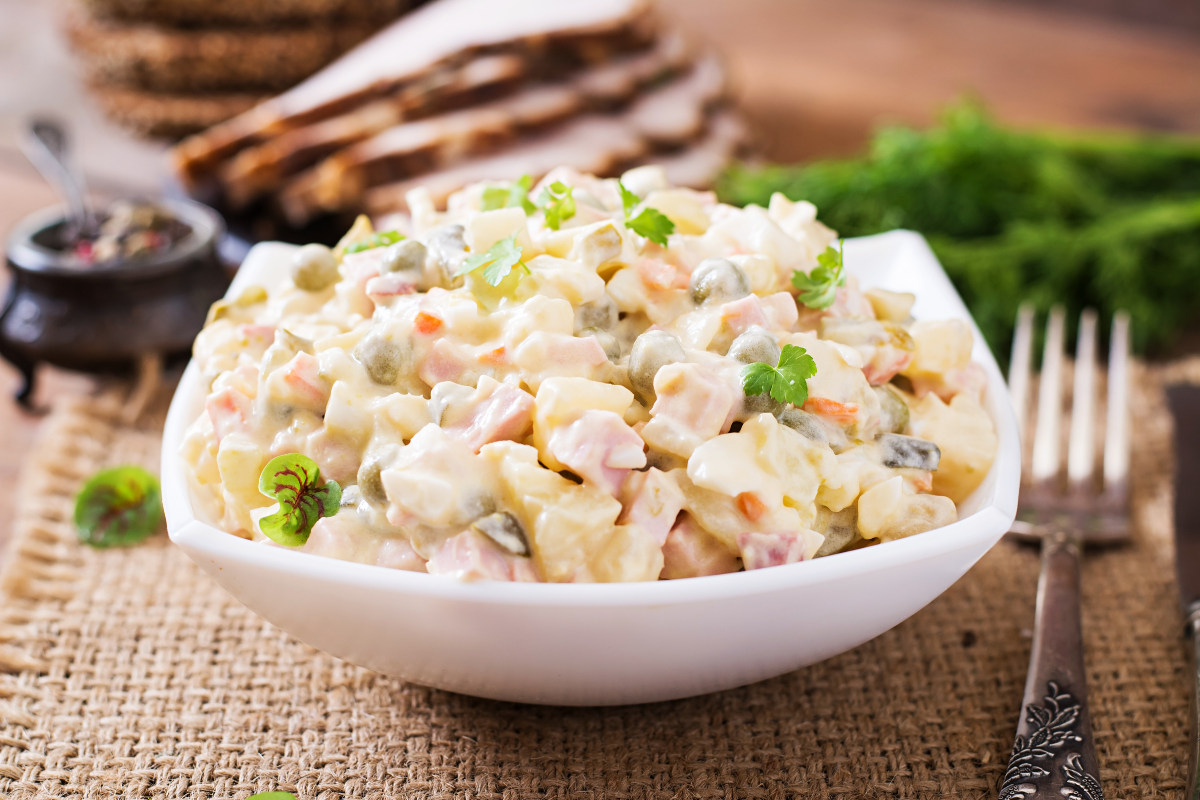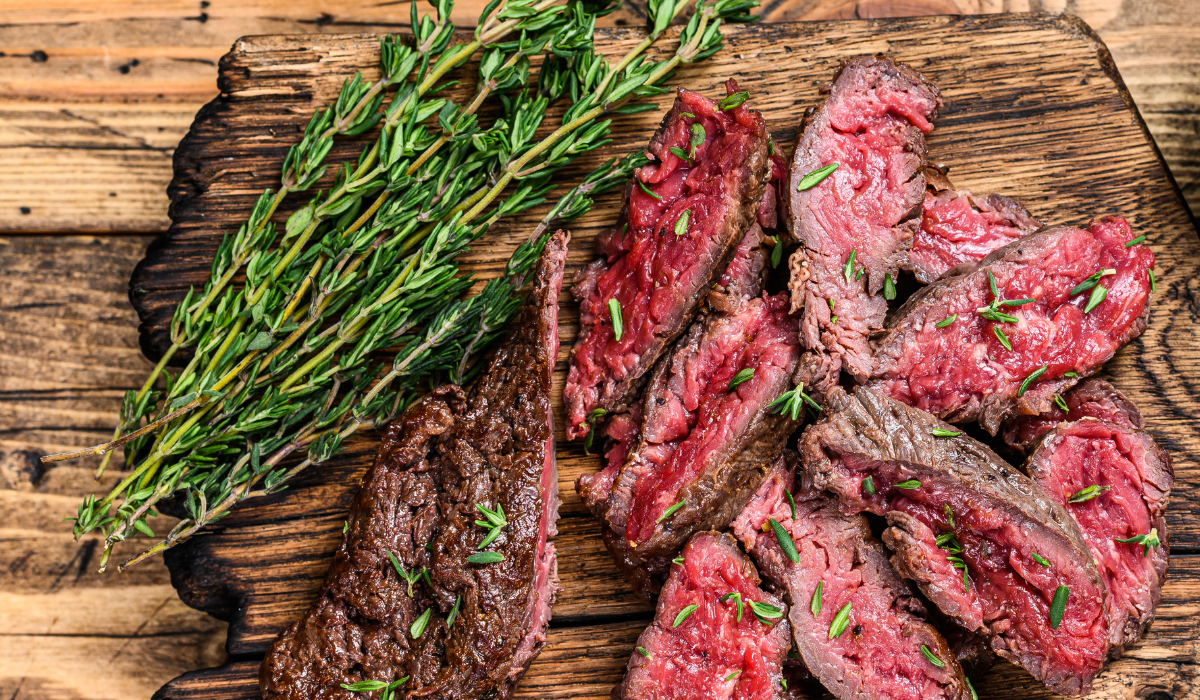
In some parts of the world, such as Argentina and Uruguay, the word “churrasco” refers to virtually any boneless cut of beef that has been sliced thin and grilled. Churrasco steak, then, would be somewhat redundant. In Brazil, however, churrasco is simply a word for “barbecue,” and it may refer to any number of ingredients cooked on skewers over the grill. Today, we will be cooking a skirt steak the churrasco way, finished with a pat of savory garlic and herb butter or the traditional chimichurri drizzle.
What is Skirt Steak?
Skirt steak is a long, thin cut of meat derived from the plate of the cow. This is a section in the middle of the flank and the brisket, near the cow’s underside. Skirt steak is flavorful, but can easily become tough if not cooked right. It does best with high-temp, fast cooking and ample time to rest. Luckily, this is exactly what we will be doing with our churrasco steak.
If you are buying your churrasco steak from a butcher, ask for the “inner” skirt cut. The outer skirt steak is fine, but it is slightly larger and has a tough membrane that will need to be removed. May as well save yourself that step with the inner cut.
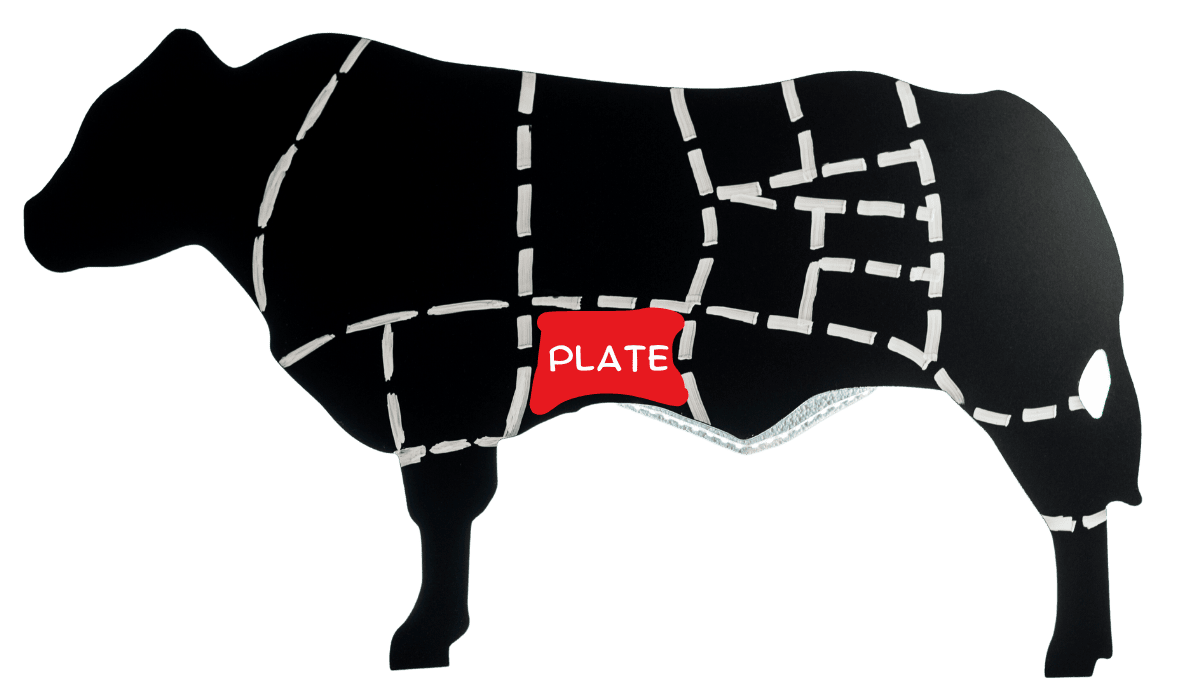
Skirt Steak Substitutes
If you do not have or do not want to use the skirt cut of beef, there are a few alternatives that you can use for your churrasco steak. Flank steak would be great, as would flatiron steak. Flatiron steak is more tender than either skirt or flank steak, thanks to a good marbling of fat. It does lack the depth of flavor found in flank and skirt steaks, however.
The best alternative to skirt steak is a flap steak. It is thin and chewy, similar to the plate cut, and cooks beautifully over high heat. Purchase a premium sirloin flap from our online store and get it delivered right to your door in time for your next cookout.
Churrasco Steak Marinade
Whatever cut of beef you choose, we recommend marinating it beforehand for 30 minutes to one hour. A marinade helps tenderize the meat while adding a punch of flavor at the same time. It has also been shown to significantly reduce the formation of substances known as Heterocyclic Amines, or HCAs. These are potentially cancer-causing compounds that form when meat is cooked over high heat. A 30 minute marinade is all that is needed to remove up to 99% of HCAs!
Marinades are generally either acidic or enzymatic. Acidic recipes incorporate oil, vinegar, citrus, and sugars; enzymatic recipes call for yogurt and fruits like papaya and pineapple. Our marinade today is of the acidic variety.
Skewers for Churrasco Style Skirt Steak
You do not have to use skewers to cook your churrasco steak. However, they do come in handy if you are cooking a large amount of meat at once or you want the convenience and fun of a hand-held option. You will need to prepare the steaks slightly differently, however.
To cook churrasco steak using metal or bamboo skewers:
- Slice the steak along the grain in 2 or 3 segments. Then, rotate the steaks and cut each segment into thin strips (around 3 inches across) against the grain. Marinate the strips for 30 minutes using the recipe below.
- When you’re ready to grill, thread the strips onto your skewers (Depending on the type of skewer, you may be able to thread more than one strip at a time.)
- Preheat your grill to high heat while you thread. Cook your churrasco steak skewers for 2 minutes per side, or until the internal temp has reached 130 degrees (medium rare). Rest for five minutes, then enjoy!
Churrasco Steak Recipe
Ingredients:
For the marinade:
2 oz extra virgin olive oil
⅓ cup fresh lime juice
2 tbsp soy sauce
1 tbsp minced garlic
2 tsp ground cumin
2 tbsp honey or brown sugar
½ tbsp salt
Freshly ground black pepper
For the Churrasco Steak:
2 lbs inner cut skirt steak
Directions:
- Put your churrasco steak in a shallow dish or gallon freezer bag. Whisk together the marinade ingredients and pour over the steak, being sure to cover fully. Marinate for 30 minutes or up to an hour (do not refrigerate).
- Heat your grill to high (500 degrees, if possible). Clean the grates thoroughly and grease them using tongs and a paper towel soaked in a little vegetable oil.
- Remove the steak from the marinade. Sear on each side for 3 minutes, or until the internal temperature reaches 130 degrees (medium rare).
- Let the churrasco steak rest for 5 minutes, then slice it against the grain.
- Finish your steak with a pat of garlic herb butter or chimichurri sauce.
Serve with a side of Brazilian rice or steakhouse crispy brussels sprouts.
More Great Brazilian Recipes to Try:
- Chicken Milanesa (Crispy Breaded Chicken Cutlets)
- Grilled Chicken Hearts (Coração de galinha)
- Brazilian Grilled Cheese Skewers


